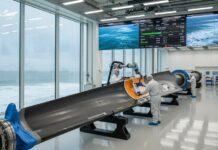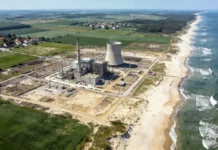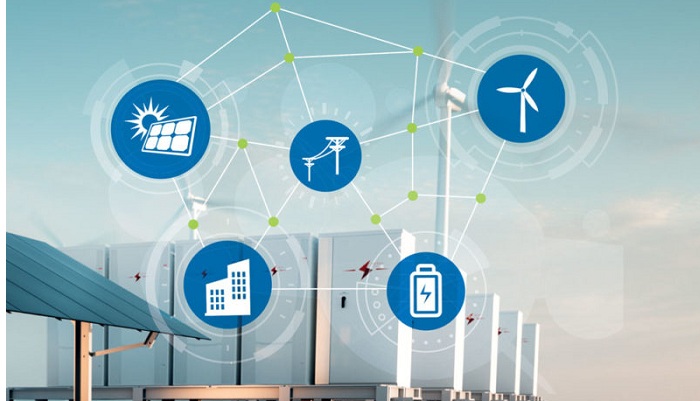Data modelling, systems design, and other smart energy technologies are being applied at the £31m Innovate UK SmartHubs Smart Local Energy Systems (SLES) virtual power plant (VPP) project in West Sussex county. The project includes several innovative energy start-ups contributing new technologies, and work is set to ramp up after the easing of Britain’s lockdown restrictions.
The project is one of four of UK government-sponsored Innovate UK pilot projects to be built over the next 3 years. It uses local partners to develop replicable, scalable, distributed energy resource management systems (DERMS) to deliver integrated intelligent local systems to deliver power, heat and mobility more efficiently across social housing, transport, infrastructure and private residential and commercial properties.
The project will also see as many as 350 smart solar panel and battery systems installed at social homes, schools, businesses and the local public sector in West Sussex. Up to 250 electric vehicle charging points to support the transition to low carbon transport will also be installed.
Innovate UK is part of the government’s UK Research and Innovation programme.
Their ‘Prospering from the Energy Revolution’ challenge is an overall £102.5 million investment from the government to develop smart systems that can support the global move to renewable energy.
The SmartHubs VPP will use smart grid technology provider Moixa’s GridShare technology to aggregate and manage the fleet of hybrid systems across transport, heat and power to deliver flexibility services into ancillary markets to help ensure system reliability.
“SmartHubs is a massive project for a massive challenge, working with a local authority committed to both the Climate Change Agenda and supporting SME scale up,” said Matthew Lumsden, Connected Energy CEO and Chair of the SmartHubs Steering Committee. “Bringing together innovative technologies and integrating them on this scale is an exciting proposition and one we are keen to see replicated up and down the country to help manage the climate emergency we’re facing. Working on a project like this during a global pandemic is a challenge but it’s more important than ever that we can create a replicable model for the rest of the UK to follow.”
“The technologies involved in the project have differing degrees of maturity and therefore are attractive to different types of investors–part of the challenge when bringing together energy systems is not only the physical integration of the technologies, it is also to find appropriate investors to co-fund the project and understand the holistic nature of it,” said Matthew.
Partners will each contribute separately in the form of new project and service delivery, with the following expected in coming months:
Lead partner Connected Energy will deliver a 12 MW in-front-of-the-meter battery energy storage system in Sompting West Sussex, as well as up to nine 300 kW behind-the-meter battery systems across the region, and up to five EV charging hubs with integrated photovoltaics and battery energy storage. These systems will use over 1,000 second-life electric vehicle batteries and add grid balancing, grid load management and resilience services to the project. The 12 MW system alone has a total capacity of 14.4 MWh, the energy equivalent of powering 1,695 average homes for a whole day.
Interseasonal heat transfer firm ICAX is designing and installing a marine source heat pump to transfer heat from the sea water in Shoreham Harbour to heat adjacent buildings of the Shoreham Port Authority using a district heating system.
PassivSystems will install 250 air source heat pumps (ASHP) with smart controls in domestic social and private residences both on and off gas grid. Learning algorithms analyse multiple data points within the homes to learn their thermal properties. Weather information and user behaviour will then be overlaid to predict user demand; this is then used to optimise the efficiency of the heating system and will enable aggregation to respond to demand side response (DSR) opportunities. Throughout the life of SmartHubs PassivSystems will further develop its smart controls and operating platform to improve social landlord and tenant interfaces and enhance demand
forecasting to support VPP outcomes.
ITM Power will investigate the feasibility of integrating electrolyser based hydrogen refuelling systems into a localised energy system. Hydrogen generated from renewables can provide zero carbon fuel for transport and support the local energy system with a 2 MW load which can be switched on or off, enabling better management and control of the electricity system.
Newcastle University’s Electrical Power Research Group’s socio-technical research will use mathematical methods in order to evaluate the whole series of network management techniques used in the project. The team will bring modelling expertise to SmartHubs, providing a detailed technical understanding of the performance parameters of each technology to be deployed.
Steve Read, Director of Environment and Public Protection at West Sussex County Council said: “We are delighted to be part of the SmartHubs project. This is an exciting opportunity and recognition of our growing reputation for delivering successful, pioneering energy projects such as our solar farms, battery storage projects and Solar Power for Schools programme.
“The lessons we learn will help the Government to plan ahead and adapt our national energy system to the fundamental changes taking place. These include the growth in renewable energy supply, increasing demand for energy from electric vehicles and other innovations and the challenge of balancing energy supply and demand.”






































